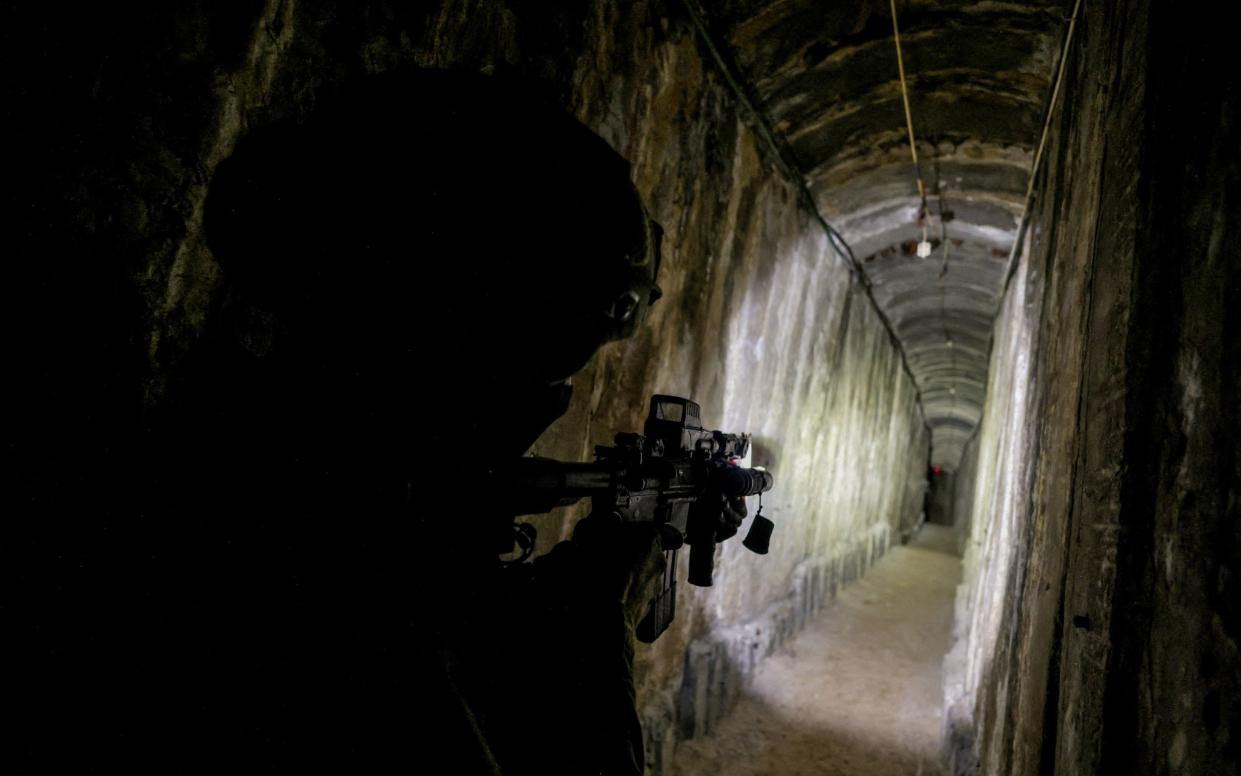Israel is flushing Hamas out of Gaza

I was inside the Gaza Strip yesterday and witnessed two terrorist tunnels being destroyed with explosives by IDF engineers in Shejaiya. In the same area of Gaza City a short time later, the IDF suffered one of its deadliest single skirmishes since the ground offensive began, with nine soldiers of the Golani Brigade killed in a gun and explosives battle with terrorists.
Heavy fighting continues in the north and south of Gaza, both above ground and in Hamas’s extensive tunnel network, which – to give you a sense of scale – is assessed to be even more extensive than the London Underground’s 250 miles. The tunnels bring yet another incredibly formidable dimension to urban combat, which is itself among the most challenging of battle environments, characterised by particularly high casualty rates, especially among attacking forces.
I’ve been into those tunnels: they are heavily fortified, concrete lined and with lighting, electric power and air supply. Over two decades they have been constructed using vast sums of money, including international aid that should have been spent on civilian infrastructure, and costing the lives of many Gazans including dozens of children sent underground to work on them.
Tunnel entrances are mostly inside civilian houses, schools, hospitals and mosques. Terrorists use them to store weapons and ammo, protect commanders and move fighters around to outmanoeuvre forces above ground. Some have been fitted with heavy blast doors to isolate sections within an interconnected network and complicate assaults by Israeli troops.
The Israelis have been mapping them for years, using aerial and satellite sensors including visual imagery and sonar, and have developed new techniques for identifying their path from ground level. Despite all that, the IDF still has a far from complete picture, and Hamas have ambushed troops by emerging from the rear in areas that had already been cleared. I was shown a tunnel opening beneath a house in Shejaiya, from which a terrorist emerged to attack IDF troops with an RPG rocket a couple of days earlier.
Sometimes Hamas’s tunnel operations can be disrupted by collapsing them and blocking entrances and exits. That can be done from the air, by explosives on the ground and using sponge bombs that produce a rapidly expanding chemical reaction that forms a rock hard wall.
The IDF has also been experimenting with flooding some of the tunnels using sea water to flush the terrorists out. It is a technique pioneered in 2015 by Egypt against Hamas tunnels on their border, but its effectiveness in this situation is not yet fully understood and it’s likely to be a lengthy process. Flooding isn’t without challenges, not least the likelihood that many Israeli hostages are being held captive underground. Only a few days ago IDF soldiers recovered the bodies of two of Hamas’s hostages from a tunnel in Gaza City.
Whenever possible, the IDF avoid going into the tunnels and getting bogged down in fighting on Hamas’s terms. Tunnel fighting is hugely dangerous, as American and Australian “tunnel rats” found to their cost in the Vietnam War. Like the Viet Cong, Hamas have booby-trapped many of their tunnels, rigged them with remotely detonated explosives and prepared concealed sniper positions to kill advancing IDF troops. Despite those hazards the Israelis are entering some of the tunnels when necessary, including to rescue hostages, gain intelligence from underground command posts and target high-level terrorist leaders. They use specially trained soldiers, dogs, robots and a range of purpose-designed weapons and surveillance equipment.
The IDF’s inexorable advance through Gaza both above and below ground has seen rocket launches into Israel dramatically reduced as terrorist freedom of action is choked off. That said, when I was in Shejaiya a volley was launched from further south, but it was knocked down by Israel’s Iron Dome before it could leave the sky over Gaza.
The terrorist command structure, too, is beginning to break down as senior leaders are killed, though the head of Hamas, Yahya Sinwar, and his henchmen probably remain underground somewhere in the south, no doubt with an eventual exit planned through tunnels beneath the border with Egypt. An increasing number of terrorists have been surrendering, which is an encouraging sign of plunging morale.
But there is still a lot of hard fighting ahead and Israel’s allies should be working to do what they can to further demoralise Hamas. Joe Biden’s false accusation against Israel yesterday of indiscriminate bombing, as well as hints that America’s support is beginning to wane, will have exactly the opposite effect.
Colonel Richard Kemp is a former British Army officer

